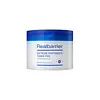What's inside
What's inside
 Key Ingredients
Key Ingredients

No key ingredients
 Benefits
Benefits

 Concerns
Concerns

No concerns
 Ingredients Side-by-side
Ingredients Side-by-side

Water
Skin ConditioningMethylpropanediol
SolventGlycerin
Humectant1,2-Hexanediol
Skin ConditioningButylene Glycol
HumectantPaeonia Suffruticosa Root Extract
Skin ProtectingCentella Asiatica Extract
CleansingC12-14 Pareth-12
EmulsifyingGlycereth-26
HumectantChamomilla Recutita Flower Extract
MaskingGlyceryl Caprylate
EmollientBetaine
HumectantAllantoin
Skin ConditioningTrehalose
HumectantEthylhexylglycerin
Skin ConditioningAmmonium Acryloyldimethyltaurate/Vp Copolymer
Leptospermone
Skin ConditioningWater, Methylpropanediol, Glycerin, 1,2-Hexanediol, Butylene Glycol, Paeonia Suffruticosa Root Extract, Centella Asiatica Extract, C12-14 Pareth-12, Glycereth-26, Chamomilla Recutita Flower Extract, Glyceryl Caprylate, Betaine, Allantoin, Trehalose, Ethylhexylglycerin, Ammonium Acryloyldimethyltaurate/Vp Copolymer, Leptospermone
Water
Skin ConditioningMethylpropanediol
SolventButylene Glycol
HumectantGlycerin
HumectantNiacinamide
SmoothingAlcohol Denat.
AntimicrobialDipropylene Glycol
HumectantOlea Europaea Fruit Oil
MaskingHydroxyacetophenone
AntioxidantC12-14 Alketh-12
EmulsifyingCaprylyl Glycol
EmollientXanthan Gum
EmulsifyingPanthenol
Skin ConditioningSodium Citrate
BufferingEthylhexylglycerin
Skin Conditioning1,2-Hexanediol
Skin ConditioningAdenosine
Skin ConditioningCitric Acid
BufferingGlyceryl Acrylate/Acrylic Acid Copolymer
HumectantAllantoin
Skin ConditioningPolyglyceryl-3 Methylglucose Distearate
EmulsifyingDipotassium Glycyrrhizate
HumectantGlyceryl Stearate Se
EmulsifyingRosmarinus Officinalis Leaf Oil
MaskingCapryloyl Salicylic Acid
ExfoliatingLactobionic Acid
BufferingMethyl Glucose Sesquistearate
EmollientCaprylic/Capric Triglyceride
MaskingPvm/Ma Copolymer
Emulsion StabilisingHydrogenated Lecithin
EmulsifyingAdansonia Digitata Seed Oil
EmollientSodium Hyaluronate
HumectantTocopherol
AntioxidantCeramide NP
Skin ConditioningPropanediol
SolventMadecassoside
AntioxidantEctoin
Skin ConditioningLysine
Skin ConditioningArginine
MaskingAspartic Acid
MaskingGlutamic Acid
HumectantMethionine
Skin ConditioningCysteine
AntioxidantCeramide Ns
Skin ConditioningCeramide As
Skin ConditioningCeramide EOP
Skin ConditioningCeramide AP
Skin ConditioningLauric Acid
CleansingMyristoyl/Palmitoyl Oxostearamide/Arachamide Mea
Skin ConditioningBenzyl Glycol
SolventHydrolyzed Glycosaminoglycans
HumectantPhytosterols
Skin ConditioningGlycolipids
Skin ConditioningBis-Capryloyloxypalmitamido Isopropanol
EmollientDihydroxyisopropyl Palmoylpalmamide
HumectantSodium Hyaluronate Crosspolymer
HumectantHydrolyzed Hyaluronic Acid
HumectantHydroxypropyltrimonium Hyaluronate
Hyaluronic Acid
HumectantSodium Acetylated Hyaluronate
HumectantDisodium EDTA
Water, Methylpropanediol, Butylene Glycol, Glycerin, Niacinamide, Alcohol Denat., Dipropylene Glycol, Olea Europaea Fruit Oil, Hydroxyacetophenone, C12-14 Alketh-12, Caprylyl Glycol, Xanthan Gum, Panthenol, Sodium Citrate, Ethylhexylglycerin, 1,2-Hexanediol, Adenosine, Citric Acid, Glyceryl Acrylate/Acrylic Acid Copolymer, Allantoin, Polyglyceryl-3 Methylglucose Distearate, Dipotassium Glycyrrhizate, Glyceryl Stearate Se, Rosmarinus Officinalis Leaf Oil, Capryloyl Salicylic Acid, Lactobionic Acid, Methyl Glucose Sesquistearate, Caprylic/Capric Triglyceride, Pvm/Ma Copolymer, Hydrogenated Lecithin, Adansonia Digitata Seed Oil, Sodium Hyaluronate, Tocopherol, Ceramide NP, Propanediol, Madecassoside, Ectoin, Lysine, Arginine, Aspartic Acid, Glutamic Acid, Methionine, Cysteine, Ceramide Ns, Ceramide As, Ceramide EOP, Ceramide AP, Lauric Acid, Myristoyl/Palmitoyl Oxostearamide/Arachamide Mea, Benzyl Glycol, Hydrolyzed Glycosaminoglycans, Phytosterols, Glycolipids, Bis-Capryloyloxypalmitamido Isopropanol, Dihydroxyisopropyl Palmoylpalmamide, Sodium Hyaluronate Crosspolymer, Hydrolyzed Hyaluronic Acid, Hydroxypropyltrimonium Hyaluronate, Hyaluronic Acid, Sodium Acetylated Hyaluronate, Disodium EDTA
 Reviews
Reviews

Ingredients Explained
These ingredients are found in both products.
Ingredients higher up in an ingredient list are typically present in a larger amount.
1,2-Hexanediol is a synthetic liquid and another multi-functional powerhouse.
It is a:
- Humectant, drawing moisture into the skin
- Emollient, helping to soften skin
- Solvent, dispersing and stabilizing formulas
- Preservative booster, enhancing the antimicrobial activity of other preservatives
Allantoin is a soothing ingredient known for its protective and moisturizingg properties. Because of this, it is often added to products with strong active ingredients.
Studies show higher concentrations of this ingredient can promote wound healing.
Though it can be derived from the comfrey plant, allantoin is produced synthetically for cosmetic products to ensure purity.
Learn more about AllantoinButylene Glycol (or BG) is used within cosmetic products for a few different reasons:
Overall, Butylene Glycol is a safe and well-rounded ingredient that works well with other ingredients.
Though this ingredient works well with most skin types, some people with sensitive skin may experience a reaction such as allergic rashes, closed comedones, or itchiness.
Learn more about Butylene GlycolEthylhexylglycerin (we can't pronounce this either) is commonly used as a preservative and skin softener. It is derived from glyceryl.
You might see Ethylhexylglycerin often paired with other preservatives such as phenoxyethanol. Ethylhexylglycerin has been found to increase the effectiveness of these other preservatives.
Glycerin is already naturally found in your skin. It helps moisturize and protect your skin.
A study from 2016 found glycerin to be more effective as a humectant than AHAs and hyaluronic acid.
As a humectant, it helps the skin stay hydrated by pulling moisture to your skin. The low molecular weight of glycerin allows it to pull moisture into the deeper layers of your skin.
Hydrated skin improves your skin barrier; Your skin barrier helps protect against irritants and bacteria.
Glycerin has also been found to have antimicrobial and antiviral properties. Due to these properties, glycerin is often used in wound and burn treatments.
In cosmetics, glycerin is usually derived from plants such as soybean or palm. However, it can also be sourced from animals, such as tallow or animal fat.
This ingredient is organic, colorless, odorless, and non-toxic.
Glycerin is the name for this ingredient in American English. British English uses Glycerol/Glycerine.
Learn more about GlycerinMethylpropanediol is a synthetic solvent and humectant.
As a solvent, it helps dissolve other ingredients, helping to evenly distribute ingredients throughout the product. This ingredient has also been shown to have antimicrobial properties which makes it a preservative booster.
Methylpropanediol is able to add a bit of moisture to the skin. It also helps other ingredients be better absorbed into the skin, such as salicylic acid.
Learn more about MethylpropanediolWater. It's the most common cosmetic ingredient of all. You'll usually see it at the top of ingredient lists, meaning that it makes up the largest part of the product.
So why is it so popular? Water most often acts as a solvent - this means that it helps dissolve other ingredients into the formulation.
You'll also recognize water as that liquid we all need to stay alive. If you see this, drink a glass of water. Stay hydrated!
Learn more about Water